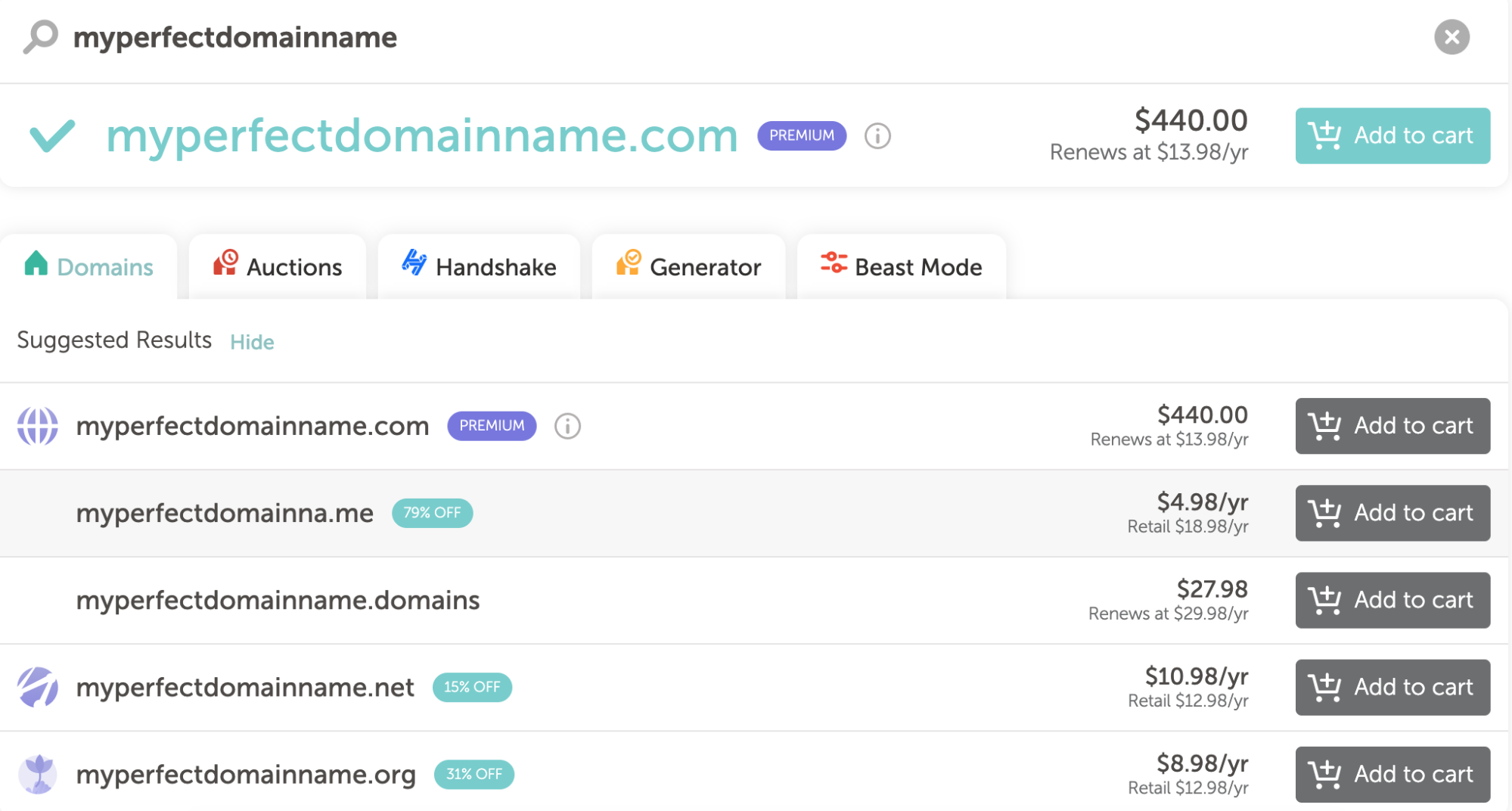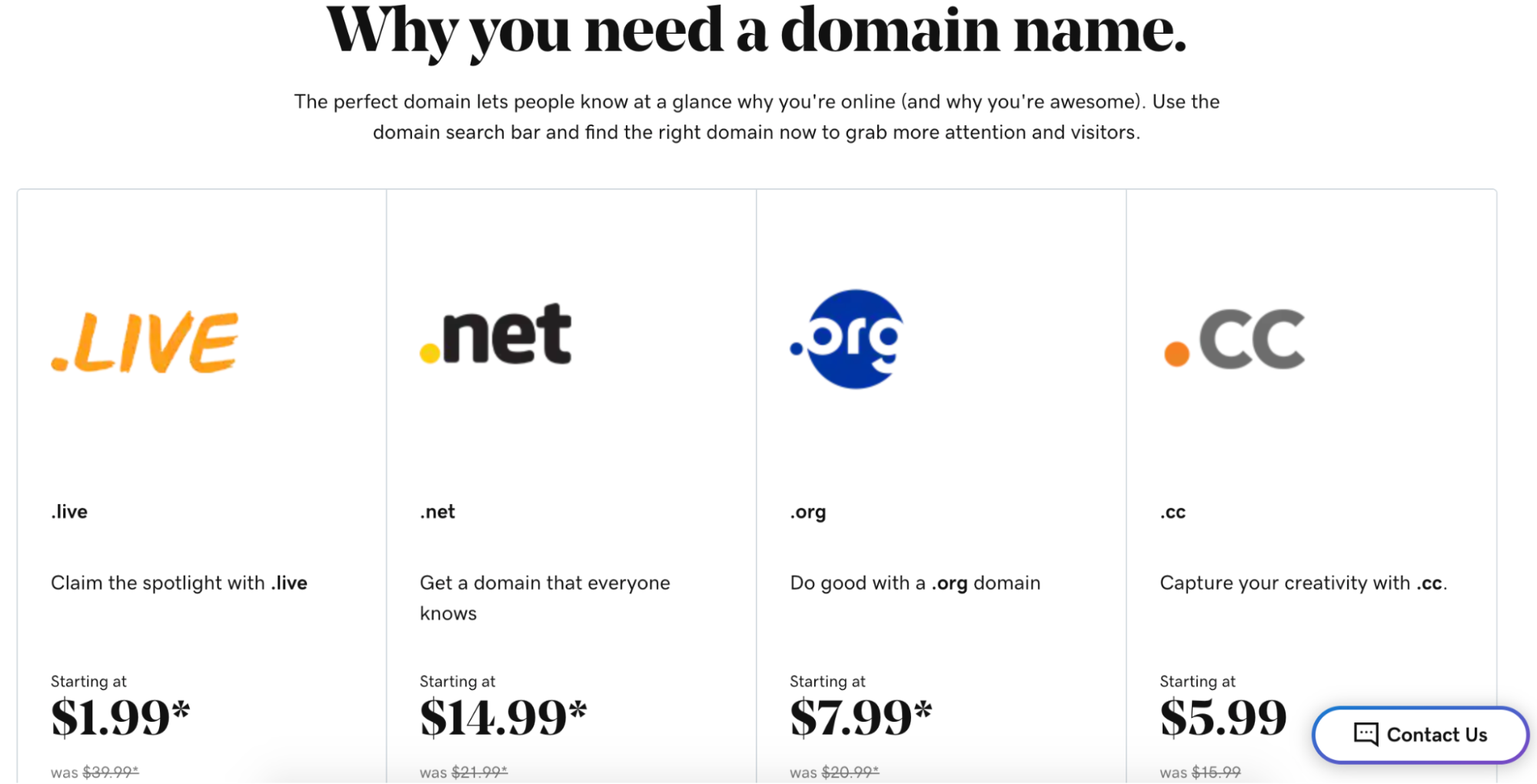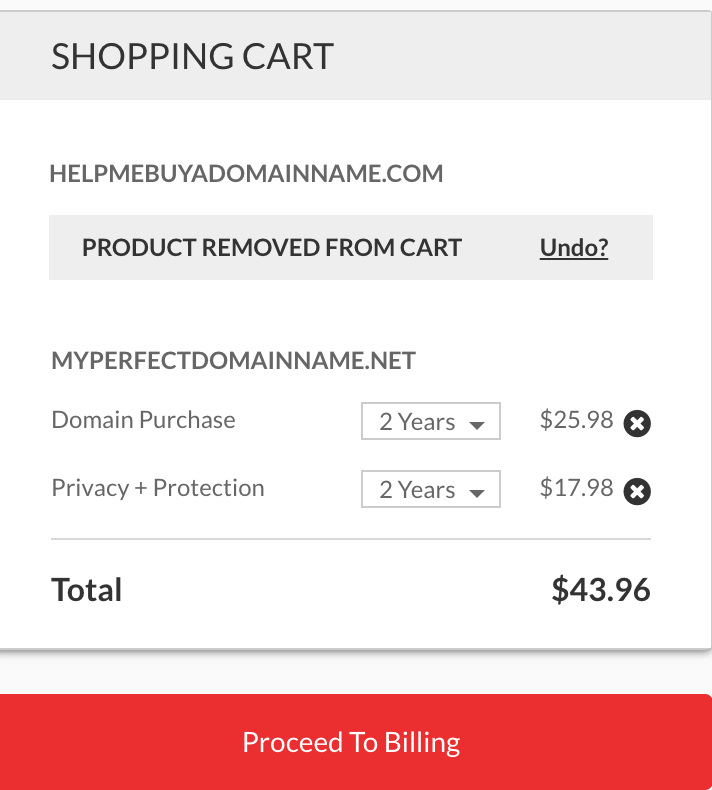No products in the cart.
How To Register A Domain Name (2024 Guide)
Table of Contents
Setting up a website is a critical step in establishing your business. Not only does it help people contact you and learn more about the business, but your website is also a reflection of your brand. Accordingly, it’s important that your website domain name reflects your business and brand accurately and effectively. Registering your website domain name can feel overwhelming for many new business owners. In this article, we break it down for you in a step-by-step guide so that you can register your domain name and get your website up and running.
Step 1. Choose a Domain Name

Your domain name is essentially the name of your website. It is the part of the URL that appears before the “.com” or “.org.” When choosing a domain name, you’ll want something that is catchy, easy to remember and aligns with your business name and brand. Finding a domain name that is available and accurately represents your business and brand can be challenging, depending on how common the name is.
You can check the availability of a domain name with a domain registrar, such as Namecheap, GoDaddy or Google Domains. In some cases, the domain name will be “available” but it will have a hefty price tag attached to it—sometimes up to thousands of dollars. Unless you are willing to pay a substantial amount of money to get a domain name—and most people aren’t—you should consider the name with alternatives to the .com extension. In many cases, a domain name will be available with .org or .biz or .net for free (or very cheap).
In many cases, the domain name registrar will suggest similar domain names that are available. For instance, if myperfectdomainname.com isn’t available, the registrar might suggest myperfectdomainname.biz.
Even if a domain name is available, you should check to confirm that the name is also available on social media to ensure alignment between your website and social handles.
Step 2. Choose a Domain Name Registrar

Although cost is definitely a consideration, choosing a domain name registrar is a bit more complicated than looking for the cheapest option. Some low-cost domain name registrars may lack adequate privacy protections and, depending on your needs, you may want to consider using the same company to register your domain name and host your website. For instance, A2 Hosting and GoDaddy are also web hosting services, which means you have a one-stop shop for purchasing and registering your domain name and hosting your website.
On the flip side, you may be able to sign up for a web hosting service that also offers domain registration, such as DreamHost or HostGator. But it is important to read the fine print in these situations as the domain name registration may only be included for a year or two, after which point there may be additional fees involved. Not all web hosting companies give you the option of registering a domain name, however. In this case, you’ll need to purchase and register your domain name with one company and host your website with another company.
Step 3. Purchase and Register Your Domain Name

Although it’s possible to register your domain name for free and meet the requirements of the global ICANN registry, not everyone is comfortable with their private information being available on the public ICANN registry. A domain name registrar will typically offer the option to provide the necessary information to ICANN while also protecting your privacy. For this reason, many people choose to use a private domain name registrar to purchase and register their domain name. This privacy protection may come with an additional fee.
Once you have chosen an available domain name, you can purchase the name for a nominal fee, typically around $10 to $15 per year. This fee is typically paid on an annual basis, but some registrars offer multi-year terms. When registering the name, you’ll want to pay close attention to the duration of the registration.
Rather than choosing a long-term registration, you may want to consider a shorter duration with automatic renewal. This way you still have the option to transfer your domain name to another company if you’re dissatisfied with the service, but you aren’t vulnerable to the domain name being scooped up by another party in the event it expires before you’ve had a chance to renew the registration.
You may also be able to bid on a domain name that is already owned, but a word of warning: the costs can be quite high, depending on the popularity of the domain name.
Step 4. Familiarize Yourself With the Domain Name Contract
The service provided by the domain name registrar, your rights and obligations, and the domain name registrar’s ability to make changes to the arrangement are all governed by the domain name contract. It is important to read and understand the domain name contract so there aren’t any surprises.
Step 5. Don’t Lose the Domain Name
Renewing your domain name is critical to ensuring that you can continue to use the domain name. If you have selected the auto-renew option with your domain name registrar, this step is as simple as ensuring that you have up-to-date payment information. If your domain name expires before you’ve renewed it, the name becomes available for purchase by others and you risk losing use of the domain name.
Step 6. Build Your Website
If you plan to use your domain name with a functional website, you will next build your website. You will need to find a separate company to host the website if your registrar doesn’t provide both services. And if you lack coding experience, you may want to use a drag-and-drop website builder such as Weebly, Squarespace or Wix to build your website.
Bottom Line
Before purchasing and registering a domain name, it is helpful to spend some time considering your business needs, goals and brand. By strategizing the way you plan to use the domain name and your website to represent your business and brand, you can make informed decisions about the domain name and its registration.
Frequently Asked Questions
What is the best domain name registrar?
The best domain name registrar will depend on the level of privacy protection, duration of registration and any ancillary services, such as web hosting, you want. Among our top-rated domain name registrars are Namecheap, Domain.com and Google Domains. Read more in our article on the best domain name registrars.
How do I know if a domain name is available?
Domain name registrars will allow you to search various options to determine if they are available. If the domain name is not available, the registrar may suggest alternative domain names that are available.
How do I permanently buy a domain name?
The short answer is: You can’t. Domain registration is more like a rental or leasing service. Most domain registrars allow you to register your domain for up to 10 years at a time, and they’ll usually offer an auto-renewal service, so you don’t lose your domain.
What happens if I want to switch hosting providers? Can I still keep my domain name?
Absolutely. Once you have registered your domain with a hosting service or website builder you can transfer that domain to a new hosting service or website builder. Transferred domains are often free for one year. However, it is important to note that the ICANN requires domain providers to lock most domains for 60 days after registration so you will not be able to transfer your domain within its first 60 days.
What is a name server?
Name servers organize and route traffic across the internet. When you enter a website name in your browser bar and hit Enter, your browser starts a process of decoding the website you’re looking for and routing your traffic to the right web server. The name server sits in the middle of this process, holding all of the records for which websites are located where.











Add comment
You must be logged in to post a comment.